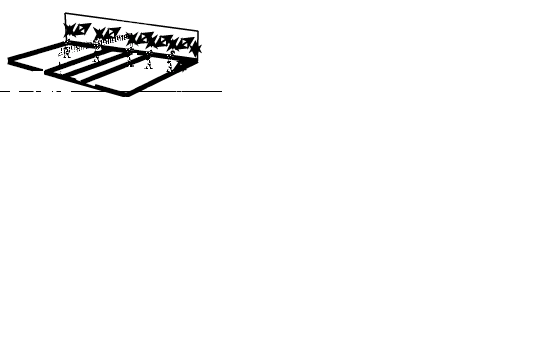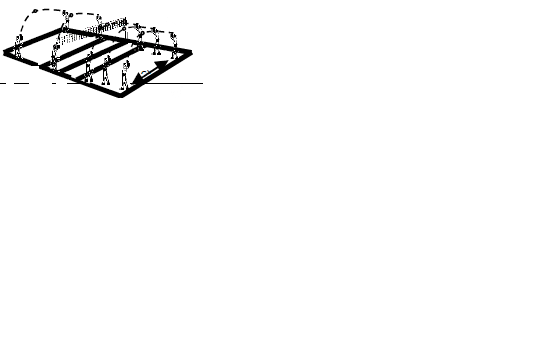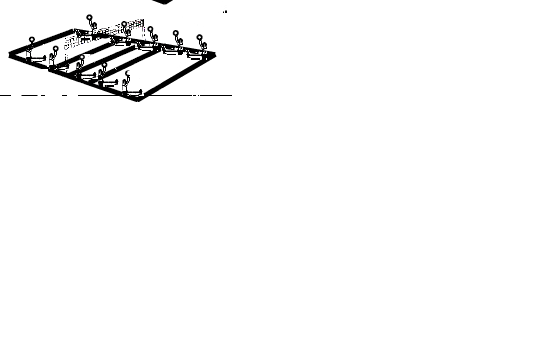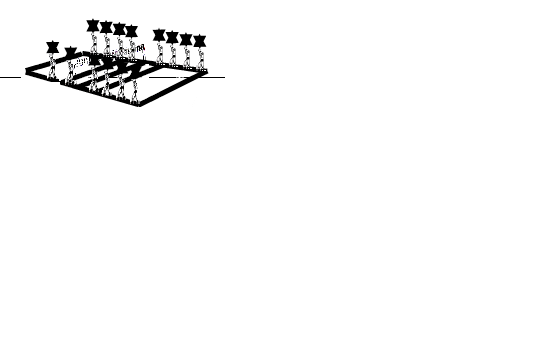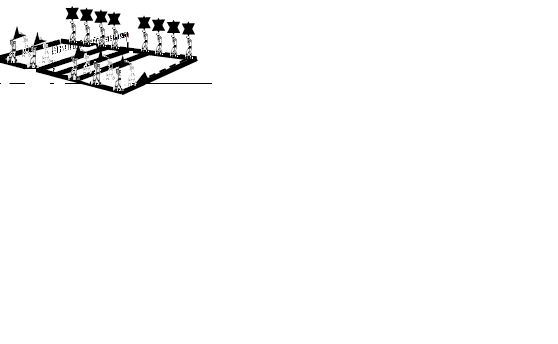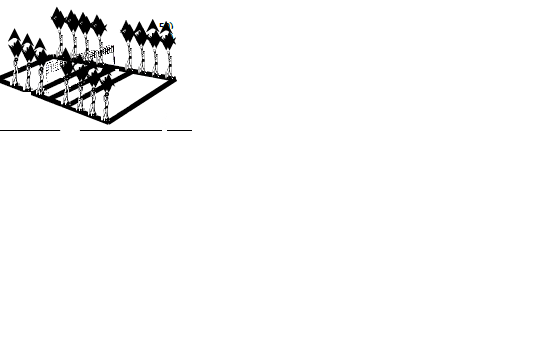Full Length Research Article - (2023) Volume 18, Issue 4
The Effectiveness Of The Role Of Social Support In Learning Some Offensive Skills In Volleyball
Received: 06-Jul-2023 Accepted: 20-Jul-2023 Published: 20-Jul-2023
Abstract
The purpose of this paper is to build a measure of social support in volleyball, identify the dimensions of the measure of social support in volleyball , and identify the effect of social support in learning some offensive skills in volleyball. The two researchers used the experimental method with two equal groups (experimental and control) with two pre and post-tests. The research community was determined by female students of the second stage at the University of Wasit - College of Physical Education and Sports Sciences. The research sample was chosen randomly from the original research community, with number of (30) students. And the number of (15) students who were randomly selected, Division (D), and the number of (15) students who were chosen randomly. Thus, the percentage of the research sample is (25,806%), which is an appropriate percentage to represent the research community in a true and honest way. As for the sample of building the scale, they were chosen from the community of the second stage, Kut University College, numbering (100) students. By presenting, analyzing and discussing the results of the pre and post-tests, the two researchers concluded: Taking advantage of the social support scale that the two researchers built in measuring other societies in the sports games decided in the faculties of physical education and sports sciences, as well as the existence of a significant relationship between social support and the development of technical performance of offensive skills in volleyball, and that diversification in applied exercises to learn offensive skills and repetitions the feedback provided by the teacher and how to invest time and effort in organizing, diversifying and distributing repetitions to the units in a way that suits the level of all students is a successful and effective educational method
Keywords
Social support. Offensive skills.
Introduction
What is happening in terms of development in various sports fields is nothing but the result of research, studies and various sciences that have contributed to the progress of sports movement in a wide way at all levels, and among those sciences that have contributed to this development is sports psychology, which has a great and clear impact along with the rest of the sciences. Theory and practice in sports games being the cornerstone of progress in all sports fields, as psychological preparation represents one of the pillars on which the educational process is based as well as other training elements, and aims to help the player control his thoughts and emotions in order to achieve the best level of performance with the different conditions of competition and social support It is "a source of effective social support that a person needs, as the amount of social support and the level of satisfaction with it affects how the individual perceives the different pressures of life and the methods of confronting him to solve the various problems of life and how to confront them, as the support is linked to health and psychological happiness, and the essence of social support represents emotional participation or supply The knowledge, information, behaviors, and actions that the individual performs with the aim of helping others in situations of crisis or the material contribution that the individual may receive from the support of relatives, friends, or family. (Mustafa, 2010).
The development taking place in the technical level of the types of games and sporting events in general at the present time did not come by chance, but rather as a result of the follow-up of those interested, specialists and researchers in developing the educational process continuously in order to raise the level of performance and achieve results. It has a great place in the lives of the peoples and nations of the world as a whole in light of the high level that this game has reached, as well as the fun, excitement and suspense it carries. Therefore, this game requires high capabilities in the mental, physical and skill aspects. Volleyball is one of the games that is characterized by its multiple offensive skills, and it is one of the most important critical skills in many cases, which require precision and mastery in their performance (Shalash .2000). As a result of the foregoing, the importance of the current research lies in presenting the concept of the role of social support among the research sample and demonstrating its usefulness in modifying skillful behavior while employing it in educational situations in order to reach the set goals.
Research problem
The research problem lies in the lack of interest in the educational aspects and the absence of social support needed by students who suffer from a lack of moral support and encouragement towards a state of self-improvement, and thus interaction is generated through social insurance for them, and based on the foregoing, the researchers considered the use of social support and its effectiveness in promoting learning While learning some offensive volleyball skills so
Research objective
• Build a measure of social support in volleyball.
• Identify the dimensions of the measure of social support in volleyball.
• Identify the effect of social support in learning some offensive skills in volleyball.
Research Methodology and Field Procedures
Research methodology
One of the things that must be taken into account in scientific research is to choose a sample that represents the original community in an honest and real way, as the process of selecting the sample is closely related to the nature of the community from which the sample is taken, as it represents the part that represents the original community on which the researcher conducts the entirety and focus of his work. (Al-Zyoud,2016) . The two researchers used the experimental method with two equal groups (experimental and control) with two pre and post-tests.
Community and sample research
Female students of the second stage at the University of Wasit - College of Physical Education and Sports Sciences, determined the research community. The research sample was chosen randomly from the original research community, with number of (30) students. In addition, the number of (15) students who were randomly selected, Division (D), and the number of (15) students who were chosen randomly. Thus, the percentage of the research sample is (25,806%), which is an appropriate percentage to represent the research community in a true and honest way. As for the sample of building the scale, they were chosen from the community of the second stage, Kut University College, numbering (100) students. The two researchers excluded a number of the sample to achieve homogeneity, and the excluded are as shown in table1 (Table 1).
| Variable | Number | original research community | Construction sample | Exploratory experience sample | research sample | percentage |
|---|---|---|---|---|---|---|
| Female students over the age of (23) years | 1 | 124 | 100 | 10 | 30 | 25.806 |
| Female students who failed and deferred | 1 | |||||
| Female students practicing volleyball. | 2 |
1. Female students over the age of (23) years.
2. Female students who failed and deferred.
3. Female students practicing volleyball.
The two researchers conducted homogenization for some variables, as shown in table 2 (Table 2).
| Variables | Measuring unit | Mean | Mode | Std. Deviations | Skewness |
|---|---|---|---|---|---|
| Length | Cm | 174.68 | 175.00 | 5.13 | 0.06- |
| Mass | Kg | 69.83 | 67 | 6.64 | 0.43 + |
| chronological age | Year | 20.5 | 20 | 0.56 | 0.89 + |
Table 2 shows that the values of the torsion coefficient are limited to (1+),which indicates the homogeneity of the research sample in these variables, i.e. the moderation of their normal distribution.
After that, the two researchers resorted to verifying the equivalence of the two research groups in the variables that relate to the tests of the study variables, according to what is shown in table 3 (Table 3).
| Statistical parameters Variables |
Experimental | Control | T value | Type Sig | ||
|---|---|---|---|---|---|---|
| Mean | Standard deviation |
Mean | Standard deviation | |||
| Social support | 78.33 | 2.09 | 76.60 | 2.79 | 1.92 | Non sig |
| Serve from below | 5.13 | 1.20 | 5.06 | 1.12 | 0.15 | Non sig |
| Passing from above | 5.12 | 1.02 | 5.06 | 0.99 | 0.17 | Non sig |
| Spiking | 9.00 | 0.89 | 8.87 | 1.03 | 0.36 | Non sig |
| Tabular score = (2.04) at a level of significance (0.05) and a degree of freedom (30). | ||||||
For the purpose of obtaining the results of the research and achieving the goals that have been drawn, there must be tools to measure the variables studied, so it was necessary for the two researchers to build a measure (social support) that the members of the research sample respond to, and which fits and achieves the goals of the research according to scientific foundations commensurate with the reality of the situation in the educational environment Therefore, the two researchers used numerical assessment scales (grading) in measuring the paragraphs of the scale, which consists of (five) alternatives to the answer (always, often, sometimes, rarely, never) and because it is commensurate with the paragraphs of the prepared scale, the nature of the research and its procedures, and gives freedom to the respondent in expressing the answers, as well as it is characterized by ease of construction and use, so the scale was finalized (Appendix 1) after it was presented to a group of experts and specialists and it contains (32 paragraphs), and then the researchers conducted With the help of the assistant work team, the exploratory experiment to verify the clarity of the instructions and paragraphs of the standards and their accuracy, the suitability of the alternatives for the research sample, and the identification of errors in advance before conducting the basic experiment. The two researchers conducted the exploratory experiment on a research sample of (10) female students after the scale, with its instructions and paragraphs, became ready for application, the two researchers, along with the assistant work team, proceeded to apply the scale to the experimental research sample of (15) female students. After completing the final distribution of the questionnaires and answering them, the two researchers obtained the questionnaires, which were collected in a special form for the purpose of arranging them in preparation for statistical analysis.
The two researchers also prepared a questionnaire for a set of tests that were presented to the experts and specialists in volleyball, testing and measurement, and an agreement percentage (80%) was approved, as the two researchers adopted the test of the skill of serving the face from below in volleyball (Alyaa, and Qassim. 2022) test the skill of numbers from above in volleyball (Raghdaa Fouad. 2022) Spiking multiplication skill test (12,5). A reconnaissance experiment was conducted on (10) students from the original community on Sunday, 10/9/2022 at ten in the morning, after which the two researchers conducted pre-tests on the two research groups (control and experimental) on (Tuesday and Wednesday) corresponding to 11-12/10/2022 at ten o'clock in the morning. The two researchers counted the educational units over a period of one and a half months, and they included (12) educational units at the rate of one unit per week, and after applying all the units, the two researchers were conducted. After completing the implementation of the main experiment, the two researchers tabulated the data of the application sample members after collecting and arranging them in preparation for statistical analysis.
Results and Discussion
Discussions
Through the previous results that were presented and analyzed for the pre and post skill tests in tables 4-6, it appeared that there are statistically significant differences between the pre and post-tests and in favor of the post tests and the experimental group in the results of social support, where the researchers attribute that the experimental group has achieved superiority and this is due to that The experimental group supported by social support and the amount of reinforcement supplies provided by others from a teacher and peers bear the meanings of moral reinforcement, as the interactive experimental group became a giver that includes social bonds until the group members were given emotional support while they perform the skills, and there are others who provide them with help and be a haven for them, especially at the time of difficulty in the educational activity provided for them (Al-Shammari .2014) (Tables 4-6).
| Variables | Pre-test | Post-test | T value | Type Sig | ||
|---|---|---|---|---|---|---|
| Mean | Standard deviation | Mean | Standard deviation | |||
| Social support | 78.33 | 2.09 | 118.60 | 5.15 | 24.04 | Sig |
| Serve from below | 5.12 | 1.02 | 7.06 | 0.92 | 31.00 | Sig |
| Passing from above | 10.25 | 2.51 | 14.18 | 2.25 | 20.40 | Sig |
| Spiking | 5.13 | 1.20 | 7.06 | 1.12 | 31.00 | Sig |
| The tabular value of (t) = (2.13) at the level of significance (0.05) and at the degree of freedom (15). | ||||||
| Variables | Pre-test | Post-test | T value | Type Sig | ||
|---|---|---|---|---|---|---|
| Mean | Standard deviation | Mean | Standard deviation | |||
| Social support | 76.60 | 2.79 | 92.00 | 3.799 | 12.56 | Sig |
| Serve from below | 5.06 | 0.99 | 6.12 | 1.08 | 17.00 | Sig |
| Passing from above | 10.18 | 2.25 | 12.43 | 2.22 | 20.12 | Sig |
| Spiking | 5.06 | 1.12 | 6.12 | 1.20 | 17.00 | Sig |
| The tabular value of (t) = (2.13) at the level of significance (0.05) and at the degree of freedom (15). | ||||||
| Variables | Pre-test | Post-test | T value | Type Sig | ||
|---|---|---|---|---|---|---|
| Mean | Standard deviation | Mean | Standard deviation | |||
| Social support | 118.60 | 5.15 | 92.00 | 3.79 | 16.09 | Sig |
| Serve from below | 7.06 | 0.92 | 6.12 | 1.08 | 2.62 | Sig |
| Passing from above | 14.18 | 2.25 | 12.43 | 2.22 | 2.21 | Sig |
| Spiking | 7.06 | 1.12 | 6.12 | 1.20 | 2.27 | Sig |
| The tabular value of (t) = (2.04) at the level of significance (0.05) and at the degree of freedom (30). | ||||||
Social support plays an essential role in eliminating a look enveloped by shyness and modesty and helps students to engage in the expanding circle of society. Therefore, support plays a key role represented in bringing students to real participation in the classroom or class (Dania ,and Jaafer. 2022). In addition, social support is actions, feelings, and behavior towards others to provide assistance and aid. In return, the student's self-esteem will increase his self-esteem when he is embraced with the aim of real help and support, standing with him at all times, providing care and guidance to him, because social support must be effective support. To achieve the desired ambition and the goal directed to it (Tahreer and Muhanned , 2021).
The researchers also attribute the development of the experimental group in offensive skills to the division of students into several groups and the formation of social skills among them, such as cooperation, exchange of opinions, and then decision-making (Al-Kaabi .2010). Caring for the learner and making him the focus of the educational process and a center of activity, respecting his opinions and abilities, and immersing him in kindness, acceptance and encouragement is a basic factor that helps learning. In addition, the offensive skills of volleyball under study require group work when performing it on the field, because the cooperative learning method increases the motivation of the learner because it provides fun during the learning process, as well as raising the psychological barriers between the learner and the subject teacher (Ibrahim ,2003). In addition to the practice of the members of this group, the exercises prepared by the teacher, as well as the many repetitions that the members of this group did, and this is consistent with what has been referred to (Abdulsalam, & Abdul-sameea. 2022). That "repetition leads us to learning according to the theory that says that the successful response is the most frequent and recent response," in addition to that the exercises were consistent with the level and effectiveness of the members of the experimental research group, as it relied mainly on the gradient in learning from easy to difficult, which led to enhancing the acquisition of performance the technical skill of the two skills and the development of their skillful performance, and this is consistent with what was referred to as " For the purpose of obtaining learning, there must be attempts to practice the exercise, and the most important variable in motor learning is the motor practice and the exercise itself.
The two researchers also emphasize the active and effective role of female students during learning within the group, as well as activating and revitalizing their previous information, which is the basis for subsequent learning by forming links between them, as well as helping to organize and arrange the content of the learned study material, as well as consulting among members of one group. It gave them an opportunity to express their opinions, dialogue, consultation, identifying different opinions, exchanging ideas and information, evaluating them, identifying right and wrong aspects, and making decisions regarding them. Make the students monitor their understanding of the educational material and ask questions to themselves and their colleagues within the same group, and then they become more aware of their thinking and have the ability to adjust their steps to reach results correct (Al-Jubouri and Ahmed. 2020) (Hussein, and Albadry. 2021) .
The two researchers believe that the students in the educational unit have shown different enthusiasm through active and group participation among them in order to achieve the best skill level they have as a result of social support and a sense of confidence and reassurance that occurred between them within each group, as well as the role of the leader in assuming responsibility in terms of "support". The social aspects of cooperating with peers, gaining their appreciation, and making decisions have strong positive effects on direct learning (Al-Salam. 2000).
Also, the reason for the development in the experimental group is due to the preparation of the educational units, which were appropriate and compatible with the abilities and levels of the students, in addition to the gradation, diversification and suspense in the exercises used in the educational units, as the process of repetition and diversity in the questions that were asked in each educational unit helped to consolidate performance. correct in the mind of the student, as the goal pursued by the educational curriculum is to develop the level of performance and improve it in line with the capabilities and capabilities available to each student in the group for the purpose of acquiring learning and reaching a good level of performance of the skill to be learned. One of the basic steps for learning the educational programs should be designed in light of the capabilities and needs of the students (Al-Moneim, 2013)
In addition, the use of repetition and variety of exercises during the educational units was one of the reasons leading to the progress in the results, as the basic and necessary rule in learning skills is paying attention to the number and variety of performance attempts. "The more repetition the skill becomes, the more automatic it becomes, the tension decreases, and the movement becomes more perfect and sufficient." (Haneen, and Aljuboury. 2023).
Conclusions and Recommendations:
Conclusions
By presenting, analyzing and discussing the results of the pre and post-tests, the two researchers concluded:
Taking advantage of the social support scale that the two researchers built in measuring other societies in the sports games decided in the faculties of physical education and sports sciences, as well as the existence of a significant relationship between social support and the development of technical performance of offensive skills in volleyball, and that diversification in applied exercises to learn offensive skills and repetitions the feedback provided by the teacher and how to invest time and effort in organizing, diversifying and distributing repetitions to the units in a way that suits the level of all students is a successful and effective educational method.
Recommendations
According to the conclusions reached by the two researchers, they recommended the following:
Need to provide real support and effective support for such an age group by all parties and parties related to the sport in an equal manner, and the need to pay attention to the diversity of exercises through the diversity of practice on the forms of learning the performance of one skill in line with the nature of the performance of the game of volleyball and its skills and the performance of these exercises in different circumstances, as well The responsible authorities in the sports institutions should pay attention to the special competencies of the student players among them and surround them with material and moral care, because it is an effective social support element for the continuous improvement in the level of performance and the achievement of high levels.
| No. | Paragraphs | always | often | sometimes | rarely | never |
|---|---|---|---|---|---|---|
| 1 | I have colleagues whom I can refer to in developing my volleyball skills and knowledge | |||||
| 2 | My self-confidence increases while performing offensive skills when my teachers encourage me | |||||
| 3 | Through interaction between peers, my confidence in myself in acquiring offensive skills in volleyball is enhanced | |||||
| 4 | I feel the excitement and suspense while I am in a volleyball match | |||||
| 5 | The more the teacher is an educational artist in his instructions, the more time and effort he shortens in offensive skills. | |||||
| 6 | Feedback from my teachers further accelerates the development of my skills | |||||
| 7 | I feel great pleasure when I receive verbal and physical interaction from my colleagues, which raise my motivation towards learning. | |||||
| 8 | I accept help and advice from my colleagues on the volleyball court | |||||
| 9 | The role of social support for me, I accept the difficult work and duty in performing the implementation of offensive skills | |||||
| 10 | Friction and integration with my team members increase my giving on the field | |||||
| 11 | The greater the desire for me to learn to perform offensive skills, the less fatigue and less boredom | |||||
| 12 | When education storms my mind on analysis and discovery through quality before quantity, my education is based on active learning | |||||
| 13 | Through the positive reinforcement I receive from the surrounding environment, I arrive at the correct response | |||||
| 14 | Through solidarity and social cooperation that occurs during and outside the lecture, I feel social security and self-assurance | |||||
| 15 | There is anxiety among my colleagues when I am not present in the lecture | |||||
| 16 | Fear and haste dissipate into reassurance and stability whenever there are instructions and directives that undermine my fears and dissipate them towards learning offensive skills | |||||
| 17 | It's a pleasure when the Division Games are interested in holding college and university tournaments | |||||
| 18 | School style makes me perform offensive skills with ease | |||||
| 19 | I feel love and happiness when I receive guidance and educational guidance from various teachers | |||||
| 20 | I accept the advice and methods given by the teachers. Support enhances the social aspect and educational and skill development in volleyball | |||||
| 21 | I feel the growth of my abilities and positive energy when I hear the instructions and directions of the teacher during the game | |||||
| 22 | Whenever the environment around us in the volleyball arena is enhanced with physical effects and devices, I am overjoyed | |||||
| 23 | I feel happy when I talk about my skillful performance with my family and colleagues | |||||
| 24 | I seek to achieve the behavioral goal of the skills to be learned in order to receive serious attention and care | |||||
| 25 | My self-confidence increases whenever I get words of encouragement from my teachers | |||||
| 26 | Whenever peers are with me in the lecture, I feel social support with them | |||||
| 27 | I receive support and encouragement from my colleagues when needed | |||||
| 28 | It achieves the effect of learning on me during the repetition of the skill to be learned and the teaching reinforcement of the response | |||||
| 29 | I am glad that my family stood with me during the performance of the skill to be learned | |||||
| 30 | The amount of social support I received while performing offensive skills influenced me in my perception of life events | |||||
| 31 | I receive aid in all its forms, including ideas, experiences, and capabilities, within the limits of assistance and support | |||||
| 32 | The low level of social support for me in the playground leads to a weakness in my ability to cope with events |
| behavioral goals | After completing this unit, students will be able to:
|
| Tools and devices | Volleyball court - volleyballs - 5 cm wide adhesive tape - tape measure - whistle - stopwatches - smooth wall. |
| Preparatory section (20) minute |
|
| - The main section (60) minute - The educational aspect (20) minute |
|
| applied section (45) minute Concluding section )10(minute | During the performance of the exercises, direct observations and appropriate feedback will be provided for each student. Note: A rest period was given for each exercise from (1am-1:30). |
| Experimental group Group number: 10 students Objective: Learn the skill of numbers from above Learning unit time: 90 minutes |
|
| Organization | exercises | time | ||
|---|---|---|---|---|
|
(1) Two students opposite each other, the distance between them is (3) m, and they pass the ball between them from the top, and so the exercise is performed continuously. Both students try to perform (60) passes within (6) minutes. This exercise is performed along the sidelines of the volleyball court. | (6)minute. | ||
|
(2) The students stand in the form of a line in front of the wall at a distance of (3) m from it, then each student performs the numbers on the wall, but the first pass is up and the second pass is on the wall, and so the exercise continues. Each student tries to perform this exercise (60) repetitions during ( 6) minutes with a rest period of (30) seconds every (20) repetitions. | (6)minute. | ||
|
(3) Two opposite students, the distance between them is (6) m. They pass the ball between them, but the first pass is to the top and the second pass is to the colleague. Thus, the exercise is performed alternately. Both students try to perform this exercise (60) repetitions within (6) minutes. | (6)minute. | ||
|
(4) The students sit in the form of a row along the side lines of the volleyball court, then they pass the ball upwards continuously and at a height of (30) cm. Each student tries to perform (60) passes within (6) minutes while taking a rest period (30) seconds Between every (20) passes. | (6)minute. | ||
|
(5) The students stand along the side lines of the volleyball court, then each student performs the pass to the top from the standing position continuously and at a height of (50) cm. Each student tries to perform (60) passes within (6) minutes while taking a rest period ( 30 seconds after each (20) pass. | (6)minute. | ||
|
(6) The students stand along the side lines of the volleyball court, then each student performs the upward pass from walking, continuously, at a height of (50) cm until reaching the opposite colleague, and then the ball is handed over to him so that the colleague performs the same action, each student tries to perform this exercise (6) Repeats back and forth within (6) minutes | (6)minute. | ||
|
||||
References
Al-Hadithi, Khalil Ibrahim (2003) The effect of using the cooperative learning method in the circular training method in learning some basic skills in volleyball, PhD thesis, University of Baghdad, College of Physical Education.
Al-Zyoud, Nader Fahmy.(2016). Learning and Classroom Learning, Dar Al-Fikr for Printing and Publishing, Amman.
Al-Salam, Ali Abd. (2000). Social support and stressful life events and their relationship to compatibility with university life among university students residing with their families and residing in university housing, Psychology Journal, Issue 53, fourth year, the Egyptian General Book Authority.
Shalash, Najah Mahdi.(2000). Kinetic Learning, University of Mosul, Dar Al-Kutub for Printing and Publishing.
Al-Shammari, Hadi.(2014). Social Responsibility among Saudi University Students, unpublished doctoral thesis, Naif Arab University for Social Sciences.
Al-Kaabi, Basma Naim Mohsen.(2010). The Effect of Education According to the Metacognitive Knowledge Strategy for Those Taking Risk Against Caution in Learning and Retaining Some Basic Skills in Volleyball, PhD Thesis, University of Baghdad, College of Physical Education for Girls.
Mustafa, Fawzi Fayez.(2010). Social Support, Dar Safaa for Publishing and Distribution, Amman.
Al-Moneim, Mamdouh Abd(2013) . The Psychology of Learning between Theory and Practice, Dar Al-Nahda Al-Arabiya for Printing and Publishing, Beirut.
Hind Ubaid Abdul-salam, & Dr. Huda Abdul-sameea. (2022). The relationship of totalitarian thinking to learn to perform the skills of preparation and receive the transmission with volleyball.Modern Sport,21(4), 0113. https://doi.org/10.54702/ms.2022.21.4.0113
Haneen Mohammed Saad, & Dr. Mawahib Hameed Aljuboury. (2023). The effect of the active thinking model on learning the skills of serving and receiving in volleyball.Modern Sport,22(1), 0086. https://doi.org/10.54702/ms.2023.22.1.0086
Dania Salman Hassan, and Dr. Nihad Mohammed Alwan. (2023). Efficiency of cognitive representation of information and its role in the power of cognitive control to perform the skill of crushing hitting with volleyball .Modern Sport,22(1), 0006. https://doi.org/10.54702/ms.2023.22.1.0006
Alyaa Ali, and Dr. Suhad Qassim. (2022). The effect exercises on the development of explosive power, speed of Kinesthetic response, and performance accuracy of the skill of crush beating for volleyball players. Modern Sport, 21(2), 0010. https://doi.org/10.54702/msj.2022.21.2.0010
Raghdaa Fouad. (2022). Mutual Social Confidence and its Relationship to a Sense of Self among People with Physical Disabilities Who are Practicing and Non-Practicing in Sports Activities .Modern Sport,21(3), 0001. https://doi.org/10.54702/msj.2022.21.3.0001
M. Dania Salman, and M. Shaymaa Jaafer. (2022). The effect of the Intustel model in learning the skills of transmitter and transmitter receiving volleyball for female students.Modern Sport,21(3), 0054. https://doi.org/10.54702/msj.2022.21.3.0054
Dr. Tahreer Soori, & Dr. Muhanned Soori. (2021). The effect of the teaching method on developing attention and learning the skill of preparing from the top in volleyball.Modern Sport,20(4), 0001. https://doi.org/10.54702/msj.2021.20.4.0001
Mawaheb Hamid Al-Jubouri and Manal Ahmed. (2020). The effect of exercises according to the differentiated education method in developing agility and learning the collar skill of students in rhythmic gymnastics.Modern Sport,19(4), 0096. https://doi.org/10.54702/msj.2020.19.4.0096
Haneen Mohammed Hussein, and Dr. Muna Talib Albadry. (2021). Self-programming of information and its relationship to some offensive skills in volleyball among female students.Modern Sport,20(3), 0055. https://doi.org/10.54702/msj.2021.20.3.0055
18-Al-Nedawy, R. I. A. ., & Saeed Al-Mousawi , S. Q. (2022). Effect of a training program on the development of physical abilities in football goalkeepers.SPORT TK-Revista EuroAmericana de Ciencias del Deporte,11, 36. https://doi.org/10.6018/sportk.522961
19-, Ghofran Basheer;, Mawaheb Hamed. 2022 A virtual educational environment to teach free swimming for children aged (4-5) years. International Journal of Early Childhood Special Education ., Vol. 14 Issue 3, p10142-10145. 4p
